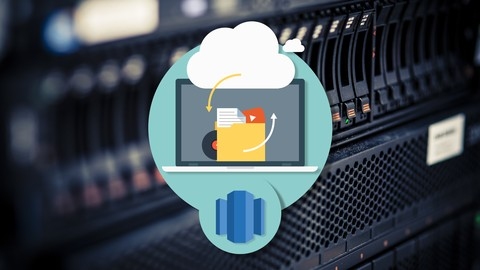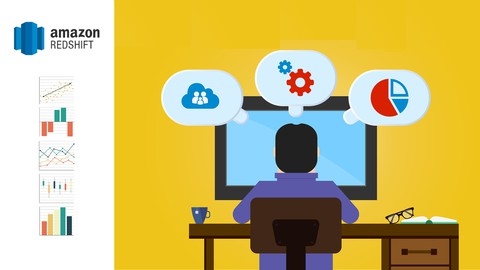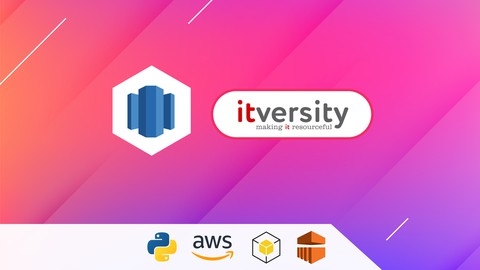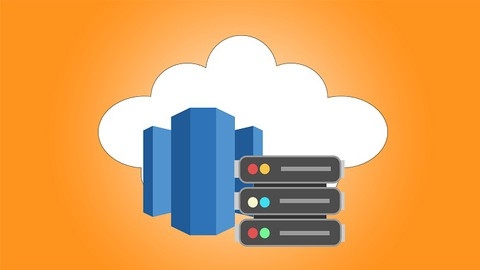Amazon Redshift is a powerful data warehouse service offered by Amazon Web Services (AWS) that enables businesses to store, analyze, and query large datasets with speed and efficiency.
It’s a crucial tool for data-driven decision-making, offering scalability, performance, and cost-effectiveness compared to traditional on-premises data warehouses.
Mastering Redshift can open up opportunities to work with big data, build robust data pipelines, and contribute to data-driven initiatives in various industries.
Finding the right Amazon Redshift course on Udemy can be a real challenge.
With so many options available, it’s easy to feel lost and unsure which course will provide the knowledge and skills you need.
You’re looking for a course that goes beyond theory, offering practical experience and hands-on projects to help you confidently apply what you learn.
We’ve reviewed countless courses and, based on our analysis, Mastering Amazon Redshift Development & Administration stands out as the best overall course on Udemy.
This comprehensive course dives deep into the intricacies of Redshift, covering everything from foundational concepts to advanced administration and development techniques.
You’ll gain hands-on experience with practical labs, learn how to optimize data storage and query performance, and explore Redshift’s latest features and integration with other AWS services.
While this course is our top recommendation, there are other fantastic options available.
Keep reading to explore our detailed recommendations for various learning levels and specific needs, and find the perfect Amazon Redshift course to help you master this powerful data warehousing solution.
Mastering Amazon Redshift Development & Administration
This course is a comprehensive and up-to-date guide to Amazon Redshift, covering a wide range of topics from fundamental concepts to advanced administration and development.
You’ll start by exploring the fundamentals of data warehouses, gaining a solid understanding of Redshift’s architecture and key features.
Then, you’ll dive into hands-on labs that teach you how to create, configure, and manage Redshift clusters, including setting up networks, loading data, and implementing effective backup strategies.
The course equips you with essential SQL skills, covering DDL and DML commands that allow you to create, modify, and delete objects within Redshift.
You’ll also learn about advanced table design features like compression encodings, distribution styles, and sort keys, which are crucial for optimizing data storage and query performance.
You’ll gain valuable insights into performance tuning and optimization techniques, learning how to diagnose and improve query performance using workload management, incremental data loads, and other best practices.
The course delves into cluster administration, covering topics like setting limits, monitoring cluster status, and implementing robust disaster recovery strategies.
What makes this course particularly valuable is its focus on Redshift’s latest features and releases.
You’ll get a deep dive into features like automatic table statistics updates, concurrency scaling, and the new Redshift console UI.
You’ll also learn how to integrate Redshift with other AWS services like S3, Lambda, and EventBridge, enhancing your ability to build powerful data solutions.
Hands-on with Amazon Redshift
The course starts by introducing you to the concept of a data warehouse and its importance.
It explains what a data warehouse is and highlights the shortcomings of self-owned data warehouses.
You’ll learn about the benefits of using a public cloud data warehouse like Amazon Redshift.
The course covers the key advantages of Redshift, such as its scalability, performance, and cost-effectiveness.
You’ll gain insights into how companies leverage Redshift for their analytics needs and explore third-party visualization tools that can be integrated with Redshift.
Moving on, you’ll dive into the basics of Redshift.
The course explains Redshift’s architecture, data loading processes, and data distribution concepts.
You’ll get hands-on experience with creating an AWS account, setting up a Redshift cluster, configuring SQL Workbench, loading data into S3, and querying the Redshift cluster through practical labs.
The advanced topics section focuses on best practices for data loading and query performance tuning.
You’ll learn techniques to optimize data ingestion and query execution in Redshift.
Additionally, you’ll have the opportunity to connect Tableau to Redshift and explore its usage.
These practical exercises will reinforce your understanding of Redshift and its integration with other AWS services and tools.
AWS Redshift - A Comprehensive Guide For Beginners
You’ll embark on a journey that goes into the fundamentals of data warehousing and explores the various deployment options available for Redshift, including Redshift Serverless and provisioned clusters.
The course dives deep into the architecture of Redshift, unveiling the intricacies of clusters, databases, and data distribution.
You’ll get your hands dirty with practical demonstrations, guiding you through tasks like creating clusters, querying data, and mastering the nuances of SQL commands.
Prepare to learn powerful techniques for optimizing performance, seamlessly loading data, and integrating Redshift with other essential AWS services like Amazon Aurora, AWS S3, and AWS SageMaker.
You’ll discover the benefits of features like Zero ETL integration with Amazon Aurora, S3 auto-copy for streamlined data movement, and Redshift Spectrum, enabling you to access data within your data lake.
The course also introduces you to Redshift ML, empowering you to build machine learning models directly within Redshift.
You’ll gain a solid understanding of monitoring and troubleshooting techniques, essential for ensuring your data warehouse runs smoothly.
This course effectively blends theory and practice, providing a robust foundation for you to tackle real-world data warehousing challenges.
The hands-on demonstrations and practical exercises will allow you to apply your newfound knowledge, solidifying your understanding and building your confidence in using Redshift to its fullest potential.
Mastering Amazon Redshift and Serverless for Data Engineers
You’ll start with the fundamentals, learning how to create a Redshift cluster and connect to it using the query editor.
The course then progresses to practical data manipulation skills, covering how to create, insert, update, and delete data within tables.
You’ll delve into advanced topics like Redshift’s copy command, which enables efficient data transfer from S3 to your Redshift tables.
The course emphasizes security best practices, teaching you how to set up IAM users and roles to manage access to your data.
You’ll also learn about different distribution styles and their impact on performance, empowering you to optimize your Redshift setup.
The course explores Redshift Federated Queries and Spectrum, allowing you to query data from external databases like Postgres directly within Redshift.
You’ll discover how to set up Redshift Spectrum, create external schemas, and execute queries using this powerful feature.
Finally, you’ll be introduced to Amazon Redshift Serverless, AWS’s serverless offering for Redshift.
You’ll learn how to create workgroups and namespaces, configure security settings, and run queries using this modern approach.
The course also explores integration with other AWS services like Lambda and EMR, enabling you to build robust data pipelines.
Throughout the course, you’ll work with a variety of tools and technologies, including Python, SQL, and key AWS services like IAM, S3, Secrets Manager, and Glue.
Build and Deploy Clusters on AWS Redshift
You’ll begin by mastering the fundamentals of IAM roles, which are essential for secure access and permission management within the AWS ecosystem.
You’ll then dive into Amazon S3, learning how to create buckets and store your data effectively.
The course quickly progresses to the heart of Redshift, guiding you through the creation of your own data warehouse cluster.
You’ll become familiar with the Redshift Query Editor and explore various connection methods, including JDBC and odbc, to integrate your cluster with diverse data sources.
Beyond the basics, you’ll gain practical skills in configuring your Redshift cluster, adjusting its properties, and even setting up CloudWatch alarms to monitor performance and ensure data security.
The course also emphasizes SQL querying for Redshift, empowering you to write, save, and schedule queries for efficient data analysis.
The integration of S3 and AWS Glue is a valuable highlight, teaching you how to create crawlers that extract data from your S3 bucket and prepare it for use in Redshift.
With practice quizzes for quick knowledge checks and a hands-on assignment to solidify your learning, this course equips you with a strong foundation in Redshift cluster development and deployment.





